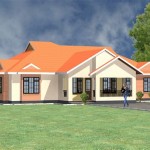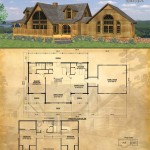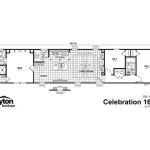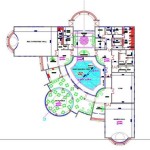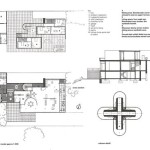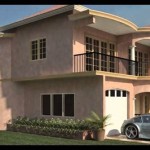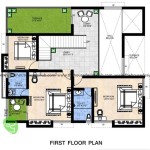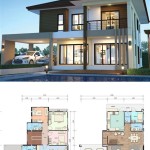French Country House Plans: A Journey into Rustic Elegance
French Country house plans, often evoking the charm of the French countryside, represent a popular architectural style blending rustic aesthetics with sophisticated design elements. These plans cater to individuals seeking a home that exudes warmth, comfort, and timeless elegance. The appeal lies in their ability to seamlessly integrate natural materials, create inviting spaces, and foster a sense of tranquility, regardless of the actual geographic location of the house.
This architectural style draws inspiration from the traditional homes of rural France, particularly the Provence region. Key characteristics include steeply pitched roofs, prominent dormers, stucco or stone exteriors, and a welcoming front porch or entry area. Interior spaces are designed to be open and airy, often featuring exposed beams, stone fireplaces, and large windows that maximize natural light. The overall effect is one of understated luxury and a connection to the natural world.
A defining feature of French Country house plans is the emphasis on creating a family-friendly environment. Living spaces are designed to encourage interaction and a sense of community. Kitchens are often large and well-equipped, serving as the heart of the home. Attention is also given to outdoor spaces, such as gardens, patios, and terraces, which extend the living area and provide opportunities for relaxation and recreation.
The enduring popularity of French Country house plans stems from their ability to blend aesthetic appeal with practical functionality. They offer a versatile design that can be adapted to suit various lifestyles and preferences. Whether building a new home or renovating an existing property, the French Country style provides a framework for creating a space that is both beautiful and livable.
Selecting the right French Country house plan requires careful consideration of several factors, including the size and layout of the property, the desired number of bedrooms and bathrooms, and the preferred style of interior finishes. Working with an architect or designer who is familiar with the French Country style can help ensure that the final design meets the specific needs and preferences of the homeowner.
The exterior of a French Country home often features a combination of natural materials, such as stone, stucco, and wood. These materials are typically chosen for their durability, low maintenance requirements, and ability to blend seamlessly with the surrounding landscape. The use of climbing vines, shutters, and flower boxes further enhances the charm and character of the exterior.
Interior design elements commonly found in French Country homes include exposed wood beams, stone fireplaces, and hardwood floors. These features add warmth and texture to the interior spaces and create a sense of rustic elegance. The use of natural colors and fabrics, such as linen and cotton, further enhances the overall feeling of comfort and relaxation.
Landscaping plays a significant role in enhancing the overall appeal of a French Country home. Gardens are typically designed to be informal and naturalistic, featuring a mix of flowers, herbs, and shrubs. The use of stone pathways, fountains, and benches creates inviting outdoor spaces that encourage relaxation and contemplation. A well-designed landscape can significantly enhance the curb appeal and overall value of a French Country property.
The adaptability of French Country house plans allows for a wide range of design variations. From smaller, more intimate cottages to larger, more elaborate estates, the style can be tailored to suit different budgets and lifestyles. The key is to maintain the fundamental elements of the style, such as the emphasis on natural materials, the use of open floor plans, and the creation of inviting outdoor spaces.
Many French Country house plans incorporate energy-efficient features, such as high-performance windows, insulation, and HVAC systems. These features help to reduce energy consumption and lower utility bills, making the home more sustainable and environmentally friendly. The use of sustainable building materials, such as reclaimed wood and recycled stone, can further enhance the eco-friendliness of the design.
Key Point 1: Exterior Architectural Features
The defining characteristics of a French Country home's exterior are crucial to its overall aesthetic. The roof pitch is typically steep, often incorporating multiple gables and dormers. This not only adds visual interest but also provides additional attic space. Materials like stucco, often in warm, earthy tones, or natural stone are common choices for the exterior walls. Accents of wood, used for shutters, trim, and porch supports, add to the rustic charm. Windows are often multi-paned and can be adorned with flower boxes overflowing with colorful blooms. A welcoming front porch, often covered, provides a transition space between the interior and exterior, inviting guests to relax and enjoy the surroundings. The integration of these elements creates a cohesive and visually appealing exterior that is instantly recognizable as French Country.
Consider the interplay of textures. Rough-hewn stone contrasted with smooth stucco creates a dynamic visual effect. The color palette typically avoids stark whites or overly bright colors, favoring instead muted tones that blend seamlessly with the natural landscape. Details such as wrought iron railings, copper gutters, and decorative door hardware further enhance the overall aesthetic. Attention to these seemingly small details can make a significant difference in the overall impression of the home.
The positioning of the house on the lot is also important. Orienting the home to maximize natural light and take advantage of views is a key consideration. A well-designed landscape can further enhance the exterior appeal, creating a sense of privacy and tranquility. The overall goal is to create a home that feels both inviting and timeless, a true reflection of the French Country style.
Key Point 2: Interior Design and Layout Considerations
The interior layout of a French Country home typically emphasizes open and flowing spaces. The kitchen is often the heart of the home, designed to be a gathering place for family and friends. Large islands, ample counter space, and high-end appliances are common features. Living spaces are typically designed to be comfortable and inviting, with features such as stone fireplaces, exposed wood beams, and hardwood floors. The use of natural materials and colors creates a warm and relaxing atmosphere.
Attention to detail is important in the interior design of a French Country home. Elements such as antique furniture, patterned fabrics, and decorative accessories can add character and charm. The use of natural light is also crucial. Large windows and skylights can help to brighten the interior spaces and create a connection to the outdoors. The overall goal is to create a home that feels both elegant and comfortable, a true reflection of the French Country lifestyle.
The placement of rooms is also a key consideration. Bedrooms are typically located on the upper floors, providing privacy and separation from the main living areas. Bathrooms are often designed to be luxurious and spa-like, with features such as soaking tubs, walk-in showers, and high-end fixtures. The overall layout should be designed to maximize functionality and create a sense of flow throughout the home.
Key Point 3: Landscaping and Outdoor Living Spaces
Landscaping is an integral part of the French Country aesthetic. Gardens are typically designed to be informal and naturalistic, featuring a mix of flowers, herbs, and shrubs. The use of stone pathways, fountains, and benches creates inviting outdoor spaces that encourage relaxation and contemplation. Patios and terraces provide additional living space, perfect for outdoor dining and entertaining. The goal is to create an outdoor environment that complements the architecture of the home and enhances the overall feeling of tranquility.
Consider the use of climbing vines to soften the edges of the home and add a touch of romance. Lavender, roses, and hydrangeas are popular choices for French Country gardens. The use of terracotta pots and planters can further enhance the rustic charm. A well-designed landscape should be both beautiful and functional, providing a space for relaxation, recreation, and connection to nature.
The integration of outdoor lighting is also important. Soft, low-level lighting can create a warm and inviting atmosphere in the evening. The use of lanterns, string lights, and spotlights can highlight architectural features and create a sense of drama. A well-lit landscape can extend the living space and provide opportunities for outdoor enjoyment year-round. Furthermore, consider adding a pool or outdoor kitchen to further enhance the outdoor living experience.
In conclusion, French Country house plans offer a timeless and elegant design option for those seeking a home that blends rustic charm with sophisticated features. These plans can be adapted to suit various lifestyles and preferences, creating a space that is both beautiful and livable. From the exterior architectural details to the interior design elements and the landscaping, every aspect of a French Country home contributes to its overall appeal and enduring popularity. Careful planning and attention to detail are essential for creating a home that truly embodies the essence of this beloved architectural style.

French Country House Plans Houseplans Blog Com

Luxury French Country Style House Plan 5090 Grand Caymus
Ooh La Discover French Country House Plans Houseplans Blog Com

French Country Floor Plans Madden Home Design

Home Plan Avignon Sater Design Collection

Plan 56477sm 4 Bed French Country House With Outdoor Kitchen Plans

French Country House Plans Floor
French Country House Plans Houseplans Blog Com

Plan 66248 French Country House With 3193 Sq Ft 4 Bedroom

Ooh La Discover French Country House Plans Houseplans Blog Com

